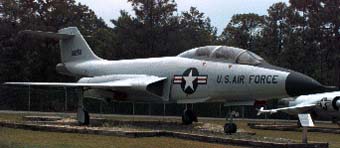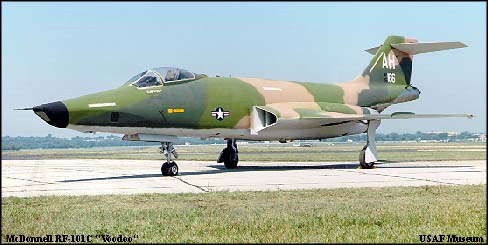McDonnell F-101 VOODOO

|
Developed from the XF-88 penetration fighter, the F-101 originally was designed as a long-range bomber escort for the Strategic Air Command. However, when high-speed, high-altitude jet bombers such as the B-52 entered active service, escort fighters were not needed. Therefore, before production began, the F-101's design was changed to fill both tactical and air defense roles.
The F-101 made its first flight on Sep. 29, 1954. The first production F-101A became operational in May 1957, followed by the F-101C in Sep. 1957 and the F-101B in Jan. 1959. By the time F-101 production ended in March 1961, McDonnell had built 785 Voodoos including 480 F-101Bs, the two-seat, all-weather interceptor used by the Air Defense Command. In the reconnaissance versions, the Voodoo was the world's first supersonic photo-recon aircraft. These RF-101s were used widely for low-altitude photo coverage of missile sites during the 1962 Cuban Missile Crisis and during the late 1960s in Southeast Asia.
This F-101B served with the 18th Fighter Interceptor Squadron, Grand Forks AFB, ND., and with the 142nd Fighter Interceptor Group, Oregon Air National Guard. It was flown to the Museum in Feb. 1981.
Span: 39 ft. 8 in.
Length: 71 ft. 1 in.
Height: 18 ft. 0 in.
Weight: 52,400 lbs. max.
Armament: Two AIR-2A rockets plus two AIM-4 guided missiles
Engines: Two Pratt & Whitney J57-P-55s of 16,900 lbs. thrust ea. (with afterburner)
Crew: Two
Cost: $1,819,000
Serial number: 58-325
C/N: 697
PERFORMANCE
Maximum speed: 1,095 mph.
Cruising speed: 545 mph.
Range: 1,754 miles
Service Ceiling: 52,100 ft.

